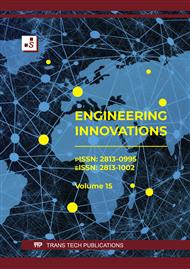p.1
p.9
p.21
p.33
p.43
p.53
Analysis of the Dislocation Structure, Kinetics and Dynamics in the High-Entropy Alloy Al0.5CoCrCuFeNi
Abstract:
A theoretical analysis of low-temperature plastic deformation processes and acoustic relaxation in the high-entropy alloy Al0.5CoCrCuFeNi has been conducted. Within the framework of proposed dislocation model it was established the key types of dislocation defects in the alloy's lattice structure; types of barriers that hinder the movement of dislocation lines (strings); and mechanisms of thermally activated movement of various dislocation line elements through these barriers at room and low temperatures. Using this model, quantitative estimates have been derived for significant dislocation characteristics and their interaction with barriers, such as the distance between local obstacles in the slip plane ∼ 4 nm, the Peierls stress for dislocations in an easy slip system 4 · 106 Pa, and more. Additionally, an estimated speed of sound 3.4 · 103 m/s based on the proposed model aligns well with the direct experimental data. The empirical estimates for the energy per unit length of a dislocation ∼ 10-8 J/m and the linear mass density ∼ 10-15 kg/m are consistent with modern continuum dislocation theory. A detailed examination of the structure of the alloy Al0.5CoCrCuFeNi was carried out using X-ray diffraction and Energy Dispersive Spectroscopy techniques. Numerical estimates of the dislocation density ∼ 5 · 1015m-2 were obtained through Williamson-Hall analysis of X-ray diffraction patterns. It was found to correlate with the estimates overall length of dislocation segments per unit volume which effectively interacts with elastic vibrations of the sample ∼ 4 · 1013m-2, as determined from acoustic relaxation measurements.
Info:
Periodical:
Pages:
1-8
Citation:
Online since:
November 2025
Permissions:
Share:
Citation:


